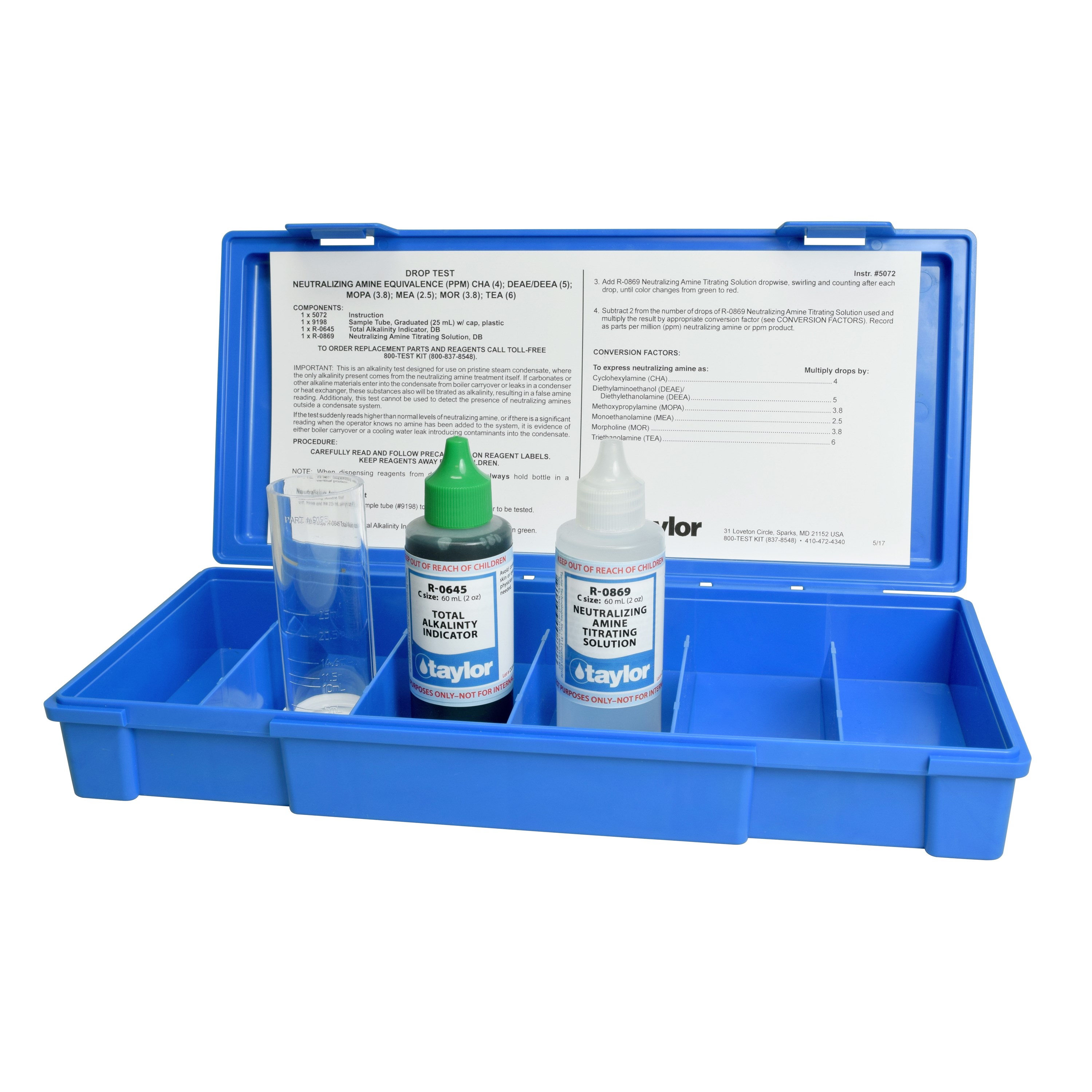Analyzing Amines
Carbon dioxide (CO2) can enter steam systems through boiler water or process leaks. When steam containing CO2 condenses, the CO2 combines with available hydrogen to form carbonic acid. While carbonic acid is a mild organic acid, if allowed to accumulate and concentrate, it can lower condensate pH enough to cause channeling corrosion of steel condensate lines.
Neutralizing amines such as cyclohexylamine (CHA), diethylethanolamine (DEEA)—also known as diethylamino-ethanol (DEAE)—and triethanolamine (TEA) are used to prevent this corrosion.
These chemicals, sometimes referred to as "volatilizing amines," are applied to the steam header or the boiler feedwater. When the boiler water is converted to steam, the amines are carried with it throughout the steam system. When the steam condenses back to its liquid phase, the amines also return to their aqueous phase, neutralizing condensate acidity and preventing corrosion.
Taylor's K-1682 is appropriate for measuring MEA, MOPA, MOR, CHA, DEAE (DEEA), and TEA in high-pressure boiler systems producing high-purity steam and in low-pressure systems (<15 psi) using demineralized water make-up. Levels are determined with an acid-base titration. Equivalencies are 1 drop = 4 ppm CHA, 1 drop = 5 ppm DEEA/DEAE, and 1 drop = 6 ppm TEA. Note: this test is not specific to neutralizing amines. Rather, it is a sensitive alkalinity test. For this reason, carbonates or other alkaline materials from boiler carryover or leaks in a condenser or heat exchanger can interfere. Likewise, do not use this product to detect neutralizing amines outside a condensate system.
In cases where neutralization cannot give full protection or where the potential for oxygen corrosion exists, filming amines such as octadecylamine (ODA) can provide corrosion inhibition. These treatments react physically with the metallic surface to lay down a monomolecular or bimolecular barrier between it and the corrosive condensate.
The condensate may have an acidic pH or may contain oxygen, but the film formed on the metal's surface protects it from attack. However, filming amines need to be monitored carefully to avoid the possibility of fouling. Use K-1243 to accurately measure the concentration of ODA in a system. It features bromphenol blue/chloroform extraction chemistry and a Slide™ comparator with standards for 0, 0.4, 0.8, 1.2, 1.6, 2.0, 3.0, 4, and 6 ppm ODA.
The drop test in K-1682 will measure several popular neutralizing amines. It features equivalencies of 1 drop = 2.5 ppm MEA/3.8 ppm MOPA/3.8 ppm MOR/4 ppm CHA/5 ppm DEAE (DEEA)/6 ppm TEA.


